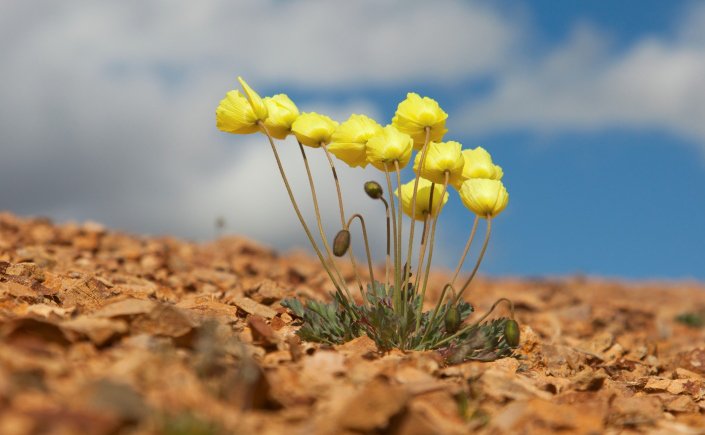
University of Minnesota researcher Peter Reich, along with numerous colleagues around the world, have found what scientists have long suspected: that despite Earth’s rich diversity of plant life, only relatively few combinations of traits are successful.
Drawing on a data set of 46,085 plant species, the researchers gave each an identity based on its scheme for growing, surviving and reproducing. Describing plants this way gives scientists a way to predict how different vegetation will respond to climate change, most crucially by the amount of carbon it can scrub from the atmosphere.
“This paper tells you about constraints on evolution,” says Reich, a Regents Professor of forest resources. “We need better models to understand and predict how vegetation globally will change with climate change. To do that, knowing more about the small number of ways plants vary can help us build more predictive models.”
The study appears in the journal Nature.
Tortoises & Hares
The researchers studied vascular plants—the ones that circulate water and nutrients via xylem and phloem—to see how they varied in terms of six traits:
- adult plant height
- stem density
- leaf area
- leaf density
- nitrogen density in leaves
- mass of seeds or spores
They found that most combinations—like a tiny plant with huge seeds—don’t exist, and only a few avenues to success are available. In fact, 78 percent of the variation in plant traits occurred along just two continuums: 1. size and 2. economic strategy, i.e., from the conservative “tortoise” strategy of growing and reproducing slowly to the risky “hare” strategy of living and dispersing offspring rapidly.
“A plant with the hare strategy has traits consistent with putting its energy into growing, but it’s more likely to die soon,” says Reich. “These plants tend to be fragile and produce many small seeds. Tortoises are long-lived, as are their leaves, and they grow relatively more slowly but are durable in the face of heat, fire, drought, insects, and so on.”
Dandelions and aspen both grow fast and count as hares, while classic tortoises include redwoods and coconut palms. Hares and tortoises are both found along the size continuum from tiny to gigantic.
Plants, says Reich, are like businesses, where one can invest a lot in photosynthesis, grow fast, and make a fast profit. But if the return on investment is low, then conserving re-sources and making deposits into accounts less often is the smart strategy.
“The hare’s ‘live fast’ strategy is best in conditions of high water, light, and nutrients,” Reich explains. “It’s like renting an expensive space for a store in a high traffic volume—you better sell a lot of goods to make up for the high costs.
“But tortoises are favored in hostile environments where it’s cold, dry, salty, etc. Because survival is key, those plants won’t do a lot of photosynthesis on any given day, and seeds are produced slowly.”
A New Language
The research creates a common language, based on plant traits, to understand and model how different environments or biomes will change along with climate. Future models will take data on plants’ chemistry and size and, knowing daily conditions such as water and sunlight availability, simulate how much carbon is scrubbed out of the atmosphere that day.
“Knowing something is a shrub or tree doesn’t tell you how it’ll respond to drought, fire, etc., but these traits do, especially the combination of size and position on the hare/tortoise continuum,” says Reich. “This helps us have a more informed framework to predict how our vegetation will be altered by climate change.”
Reich and colleagues have also published a related study in which they showed that trees from the temperate and boreal zones acclimate to rising temperatures by curbing their respiration—the sector of metabolism that burns sugars for energy—and releasing much less carbon dioxide than had been feared. That work also appears in Nature.
Worldwide Team
Reich and originally 20 colleagues, now hundreds, are building a grassroots international science group to bring together information on plants around the world. Reich and coauthors Ian Wright and Mark Westoby of Macquarie University in Sydney, Australia (where Reich now also has an appointment), started classifying North and South American and Australian plants according to traits during Reich’s 1998-99 sabbatical there. He and Wright led one of the first “big data” studies, which in 2004 published trait data on 2,500 species of plants.
The current mammoth database, dubbed TRY by coauthor Jens Kattge of Germany, has data on tens of thousands of species and is making many researchers’ data widely available and giving them credit for it.
“Unlike weather data, government isn’t doing this,” Reich notes.